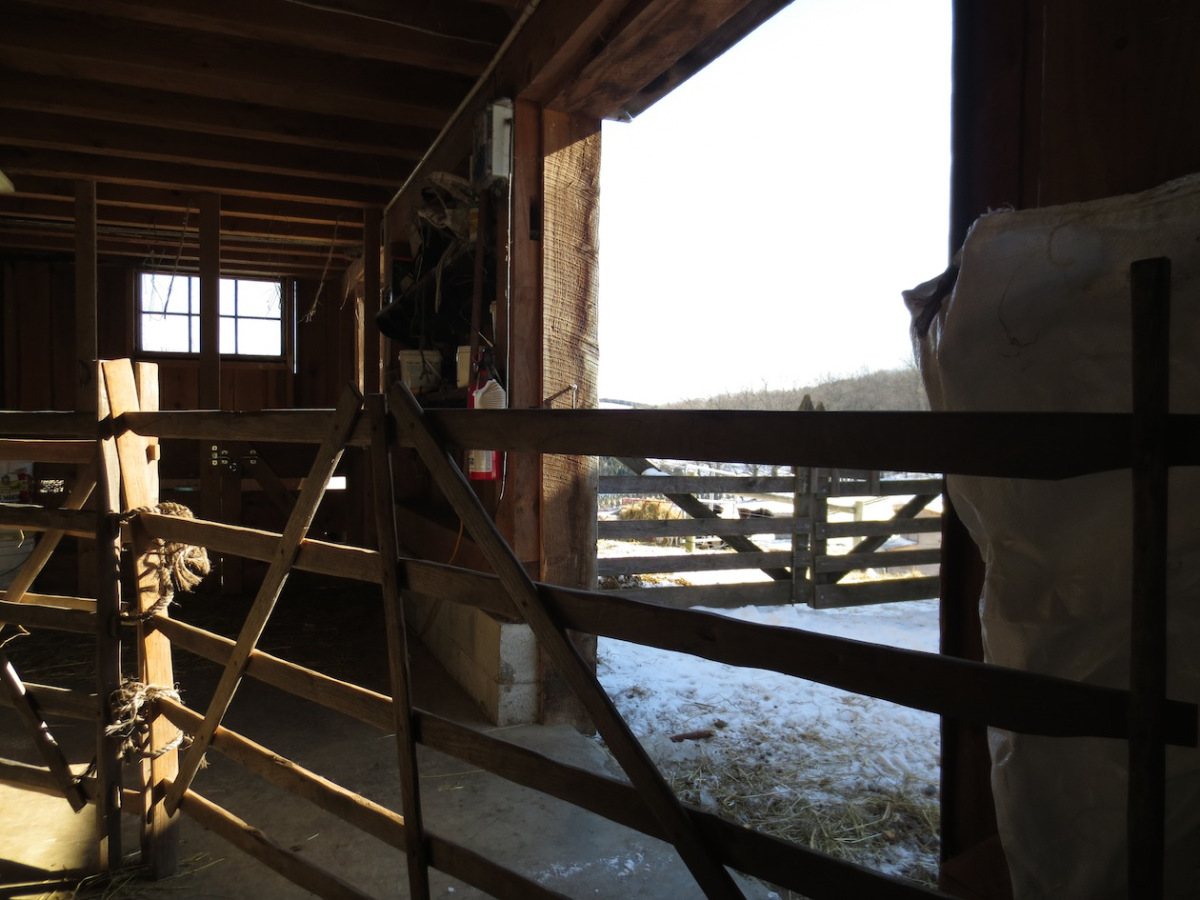The last week has found us in the clutches of bitter temperatures. When the temperatures dip into the single digits my barn water hydrant freezes and the frozen waterfowl troughs become too heavy to dump. Fortunately the hydrant in the boat barn is reliable and uphill from the heated field trough so draining the hose after use is easy. Until the duck and goose "ponds" melt a bit, the fowl must be content with buckets of water drawn from the cow and donkey trough. I placed the round bale of hay closer to the hill to provide northly protection from the wind.With the Katahdins and Gretel nearing the end of their pregnancies, I have changed my management practices. Gretel's earliest due date is in the middle of February. She overnights in the goat pen to avoid excess jostling and eats her portion of grain without competition. During the day she roams the barnyard for exercise, eats hay from the round bale feeder and lies in the sun. The ewes now overnight in a paddock fashioned at the bottom of the barn with two pen specific gates and two panels from the trailer pen.The ewes have two 8' troughs set up along the back wall of the barn for their portion of grain. With 16' of trough there is plenty of room for all the ewes to eat without competition. A much distressed Burgess now beds down and eats with the wedding wethers. During the coldest nights I keet the sheep and goats closed in the bottom of the barn. I set up the 4 hurdles as a moveable chute for guiding the ewes and goat away from the bins of grain and out to the paddock. In spite of the frigid temperatures I keep the sheltered door open during the day to welcome in the sun.
Becoming a shepherd is a humbling endeavor. It requires that I observe the sheep, looking for clues to conditions I often do not know exist. For example, I noticed that the yearlings' bellies were rounding, but missed that their condition score was dropping until I ran my hand along their bumpy spines. According to the advice of my books I had planned on starting to feed grain during the last week of January but, experience would have told me to start a week or two earlier. As LHF grows, so will our handling facilities. With more secure fenced fields I will be able separate the yearlings for later breeding dates, to avoid stressing their growing bodies with early first lambings. As my flock grows, staggered lambing dates will also allow me to use the pens that I have without overcrowding. My winter reading list reflects my deficiencies as a shepherd. I have been reading about nutrition and the types of hay best suited to the needs of the sheep, hoping that I will know what to look for when looking at a field ready to be cut and a round bale offered for sale. At a workshop sponsored by Fertrell's I paid particular attention to the talk about feeding small grains to rumninants. I have also been reading about lambing and watching youtube videos to refamiliarize myself with lambing-normal and troubled. Hopefuly when faced with an unexpected problem I will be able to manage and add another "thing" I notice as I tend my sheep.



